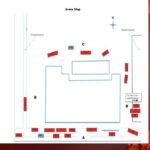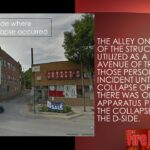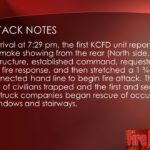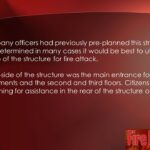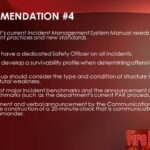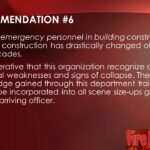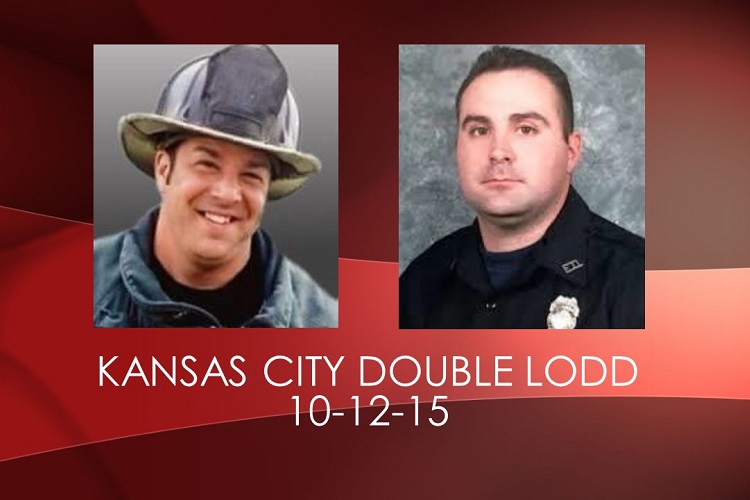
By Joseph Pronesti
The United States Fire Administration reported that 1,230 firefighters died between 2000 and 2012. Structural collapse caused 142 of these firefighter deaths (11.5 percent). The number of fatalities includes firefighters killed by collapse inside and outside a structure.
On the night of October 12, 2015, Kansas City (MO) Fire Department (KCFD) Firefighters Larry Leggio and John Mesh unfortunately became two additional names that were added to this statistic when updated. These two brave brothers were on the outside of a structure located at 2608 Independence Avenue when the D side wall collapsed.
This month’s line-of-duty death review and training highlights the events prior to the collapse and recommendations from an internal report. Radio traffic was obtained from the Kansas City Star, and it adds to the learning experience and lessons gleamed from the report. To the student reviewing this report: If you have collapse zone procedures in your department, and if you are an officer or command chief on your respective department, are you disciplined enough to follow and enforce such procedures?
Collapse in a type III building is a real concern, and we all need to review and recognize the warning signs. On the night of October 12 last year, KCFD commanders did what many commanders would do—decide that a building is doomed and switch from an offensive to defensive attack. Evacuation was ordered, and personnel accountability reports were taken, but just minutes after these procedures were enacted, a curtain fall collapse occurred, killing the two men and injuring several others. This report also examined the fire travel in the concealed spaces and, in listening to the audio, we can deduce an educated guess that fire was running unchecked in these spaces.
SECTOR OFFICER ISSUES
One contributing factor noted in the KCFD report discussed issues with sector officer discipline. A huge mistake that I see when I am studying fires and fireground command is the use of company officers in the role of sector officers. I come from a smaller department that constantly wrestles with expanding our command structure at larger events; we simply do not have enough command-level bosses to affectively sector an event quickly. This can be said for many departments around the nation, but through the use of mutual aid and chiefs actually working together prior to the fire event, this can be alleviated.
Does your department have “chief boxes” or the ability to get white hats to the fire? To rely only on company officers from the “home” department to function as sector bosses is, in my opinion, playing command Russian Roulette. Remember that, 99 percent of the time, most company bosses lead and safeguard—at most—five to six members and more likely three or four on a daily basis. It’s a huge leap of faith to ask that same boss to supervise four or five companies, especially companies and firefighters from foreign departments.
Can you, as a company or chief officer, assign a supervisor who must do the following as a sector boss:
- Establish and maintain collapse zones in your assigned sector?
- Keep members from meandering close to a collapse zone to operate a line or take a peek inside the structure even for a second?
- Be able to constantly monitor the building involved from a wide angle not just a myopic view?
Honor and respect these members by critically examining buildings of type III construction, the hazards of concealed spaces, and the ability of your department to deliver competent and trained sector officers.
Download the Internal Investigation Report HERE
May Their Sacrifices Not Be in Vain: Cincinnati (OH) Firefighter LODD Case Study
May Their Sacrifices Not Be in Vain: Muncie (IN) Firefighter LODD Case Study
May Their Sacrifices Not Be in Vain: Lancaster (PA) Firefighter Near Miss Review
May Their Sacrifices Not Be in Vain: Buffalo (NY) LODDs Case Study
May Their Sacrifices Not Be in Vain: Homewood (IL) LODD Case Study
 JOSEPH PRONESTI is a 26-year veteran of the Elyria (OH) Fire Department, where he is an assistant chief and shift commander. He is a graduate of the Ohio Fire Chiefs’ Executive Officer program and a lead instructor at the Cuyahoga (OH) County Community College Fire Academy. He is a contributor to fire service publications and sites, including Fire Engineering. He will be presenting a four-hour preconference classroom at FDIC International 2016 titled “Main Street Tactics and Strategies: Are You Ready?” He can be reached at efdcaptain33@gmail.com
JOSEPH PRONESTI is a 26-year veteran of the Elyria (OH) Fire Department, where he is an assistant chief and shift commander. He is a graduate of the Ohio Fire Chiefs’ Executive Officer program and a lead instructor at the Cuyahoga (OH) County Community College Fire Academy. He is a contributor to fire service publications and sites, including Fire Engineering. He will be presenting a four-hour preconference classroom at FDIC International 2016 titled “Main Street Tactics and Strategies: Are You Ready?” He can be reached at efdcaptain33@gmail.com



